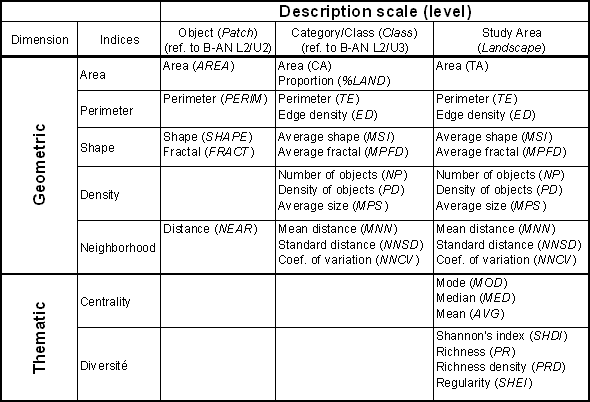At the scale of the study area: “the structure”
Which are the number, the size, the shape, the localization of the spatial objects constituting the study area? Here is a type of questions relating to the spatial arrangement which concerns before all the geometrical aspect of the objects, considered either individually or in relation to the whole. One can supplement this structural description by integrating the thematic dimension of information. The thematic dimension arises either in term of selection criterion to return account of the global geometrical properties of each class or category of objects, or in a more significant way to deduce diversity of the thematic properties within the study area.
Table 3.1 summarizes the principal geometrical and thematic indices of structure, at the levels of the objects, of the classes or categories of objects and of the whole of the study area. This distinction in three levels corresponds to that presented by McGarical and Marks (1994) in their manual "FRAGSTATS: Spatial Pattern Analysis Program for Quantifying Landscape Structure ". The authors name respectively them patches, classes and landscape. A certain number of these indices, in particular at the individual level of the objects and that of the categories, were already presented in the basic module of spatial analysis (B-AN), within Units 2 and 3 of Lesson 2 "Spatial discrete variables".
|
We will illustrate all these indices with the situation presented at Figure 3.1, but only indices not yet presented at Lesson 2 of the basic module of spatial analysis (B-AN) will be described in a detailed way.

